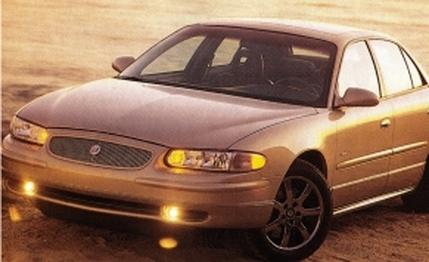
 Specialty File
Specialty File
Whimsy doesn't come to Buick naturally. VW and Chrysler will put wacky show cars like the New Beetle and the Prowler into production, but when was the last time any GM division did that? The '53 Corvette?
Putting aside its golf clubs for a moment, Buick is working to adapt the multipart convertible roof from the four-door Cielo concept car shown at the 1999 Detroit auto show to the Regal sedan currently in production. The first result of that effort is the Regal Cielo, which turned up at this year's Los Angeles auto show.
The Regal Cielo isn't so much a concept car as it is Buick's first step toward showing that it can respond to the public's desires in a nimble and quick manner, and with some passion. More than just an engineering exercise, it's the division looking at its own corporate soul.
Starting with a production Regal GS sedan powered by the 240-horsepower supercharged 3800 V-6, the team working for Michael Doble, Buick's manager of specialty vehicles, basically hacksawed out the rear window and the roof between the structural stampings that support the doors. Filling that space are two movable steel panels and new rear glass that slide along rails in channels on either side of the roof. Touch a conventional-looking sunroof button, and the glass and roof sections slide down those rails past a neatly integrated panel at the leading edge of the trunklid to store vertically behind the rear seat.
Except for some slight reshaping along the bottom of the C-pillars, a shortened trunklid to accommodate the tonneau and its integrated third brake light, and the tunneled appearance of the new rear window, when the Regal Cielo is buttoned up, it looks pretty much like any other Regal. When the car is in full open-air mode, it looks somewhat like a parade car for a South American military strongman. Think of it as the Augusto Pinochet package.
Since the roof settles down smack between the rear wheels, the challenge for Buick was accommodating that stack and the eight electric motors that operate it exactly where the rear suspension is located. So the engineers replaced the coil springs with compact air springs, freeing up enough space for the roof panels. If the Cielo roof were to go into regular production, it would likely have to be engineered to somehow work with the stock suspension. Despite all the whirring mechanisms involved, Buick claims the whole assembly adds only 109 pounds to a standard Regal GS, and with the top closed, the trunk pass-through for long objects is retained.
Beyond that, the only other changes to the Regal Cielo prototype were the adoption of Baer Racing brakes behind 17-inch wheels, some lower body cladding, a special grille, subdued Cielo badges, and a short rear spoiler to add dazzle on the show stand. When the roof is closed, casual observers will never know the Regal Cielo is anything but another Regal GS.
Taking into account the fact that the rear suspension isn't completely sorted out, the Regal Cielo works surprisingly well. In a short drive at city speeds around Laguna Beach in Southern California, we found that the retention of the one-piece door-ring stampings seems to pay off in a solid structure for the car. With the top completely open and the side windows closed, front seat passengers feel nary a breeze; those in the back, only the lightest wisp. When it's all closed, the driving experience is indistinguishable from stock. The roof can also be adjusted in intermediate steps, opening the forward panel as a huge conventional sunroof or lowering the rear window for a Mercury Turnpike Cruiser effect.